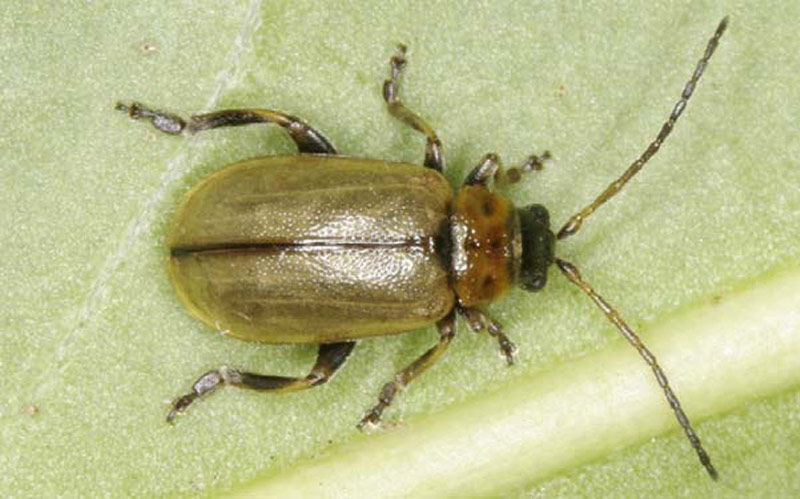Heather Beetle and Burning: Evidence, Opinions and Policy Gaps
- Andrew Gilruth

- Sep 4
- 3 min read
Updated: Sep 10

Heather beetle (Lochmaea suturalis) continues to cause concern across the uplands, with outbreaks leading to large areas of damaged heather. Members have asked about the role of burning in relation to beetle control and recovery. Below is a summary of past research, observations and opinions drawn from the scientific literature.
Historical Suggestions for Beetle Control
Early views: Morison (1938) and Cameron et al. (1944) suggested that burning heather in summer could help control beetle numbers during the early stages of an outbreak.
Larvae and adults: Cameron et al. (1944) reported that summer burning could kill larvae. They also noted that spring burning did not reduce adult numbers.
Vulnerability of larvae: Grimshaw (1911) and Morison (1963) also recommended out of-season burns, believing larvae were most vulnerable then.
Pupal stage: Staley (2001) suggested that pupae might be harmed by low humidity during this stage and that burning could worsen survival.
Claims About Preventing Outbreaks
Managed moors: The Moorland Association and The Heather Trust (2008) argued that well-managed moors, with the right balance of burning and grazing, would suffer less beetle damage. This was based on the idea that older heather is more vulnerable.
Unmanaged heather: Mowforth and Sydes (1989) claimed beetle infestations mainly occurred in neglected heather.
Observations and Manager Opinions on Recovery
Scottish estates: MacGillivray (2004) found that on four Scottish estates, heather recovered more strongly in areas burned after beetle damage.
Norway study: Nilsen (2004; Nilsen et al. 2005) found that shorter burning intervals led to stronger regeneration from seed in coastal heath in central Norway.
Manager reports: Pakeman et al. (2002) noted that many moorland managers reported “success” using burning to encourage heather recovery after beetle damage.
Key Issue
Heather beetle (Lochmaea suturalis) outbreaks are now a recurrent and widespread driver of heather loss across upland Britain. Severe infestations cause widespread canopy die-off, leaving extensive areas of dead heather. These areas:
Present extreme wildfire risk as they dry and accumulate fuel.
Become rapidly colonised by competitive grasses (Molinia, Deschampsia), leading to a permanent shift away from heather-dominated habitat.
Natural England’s position
Despite published observational studies and practitioner reports describing positive heather regeneration following carefully managed burning of beetle-damaged stands, Natural England’s evidence review (NEER009) concluded that there is no robust experimental evidence that burning reduces beetle impact or reliably stimulates heather recovery.
Regulatory Challenge
Natural England has adopted a precautionary approach, withholding licences for burning on the grounds of insufficient robust evidence. This applies the precautionary principle in only one direction and does not adequately weigh this countervailing risk of doing nothing.
Risk of action: poorly executed burning could damage peat or accelerate grass invasion.
Risk of inaction: permanent loss of heather habitat and seedbank, leading to long-term degradation of designated sites.
A Pragmatic Alternative: Adaptive Licensing
A more proportionate and constructive approach would be to permit adaptive, practitioner monitored interventions:
Licences for small-scale, controlled burns in beetle-damaged areas where grass encroachment risk is demonstrably high.
Integration with other measures: cutting, reseeding and grazing adjustment, depending on site conditions.
Mandatory monitoring and reporting: each licence generates data on vegetation recovery, providing the evidence base currently lacking.
Feedback loop: if burning proves ineffective, land managers will naturally cease using it.
This approach mirrors existing Defra policy mechanisms (e.g. Environmental Land Management pilots) where evidence is generated through managed delivery, not withheld pending decades-long trials.
Benefits
Urgency: Allows immediate intervention to address the annual loss of heather, rather than waiting for multi-decadal trials.
Risk management: Reduces wildfire hazard from dead stands.
Evidence generation: Builds the robust dataset Natural England requires, at scale and at pace.
Fairness: Gives land managers a practical tool to address catastrophic beetle outbreaks, aligning regulatory decisions with ecological reality.
Recommendation
Defra and Natural England should adopt an adaptive licensing framework for managing beetle damaged heather, balancing risks of action and inaction and embedding evidence generation into licensing conditions.
This would prevent further irreversible loss of heather moorland, one of the UK’s most iconic and ecologically valuable habitats, while simultaneously providing the long-term evidence base needed to refine policy.
📧 Keep updated on all moorland issues - sign up for our FREE weekly newsletter.


